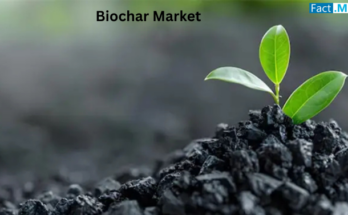As per a newly released report on battery chemicals by Fact.MR, a market research and competitive intelligence provider, the global market is projected to surge ahead at a CAGR of around 8.3% over the period of 2022-2032, attributed to factors such as growing demand for battery chemicals to be used in lithium-ion, lead acid, and alkaline batteries, to name a few.
Automotive OEMs, their suppliers, and other stakeholders are beginning to make the necessary arrangements and discover ways to accelerate the timeframe by resorting to backward integration in the supply chain to fulfil the escalating battery requirements of the future and ensure regular inflow of cash.
According to recent experience, it takes five to seven years to reach full operating capacity of several gigawatt-hours per year after starting to plan a battery manufacturing plant and setting up a pilot production line. However, the timing of building new battery manufacturing capacity is crucial.
Historically, the battery chemicals market has been driven by lead acid batteries; however, lithium-ion batteries have started to take over the market with the advent of newer technologies such as advanced lithium-ion batteries and lithium sulphur batteries.
Regional markets of the future will no longer be reliant on imports, as both domestic and multinational corporations will seek to invest and create manufacturing facilities across regions, backed by government subsidies and tax breaks.
Key Takeaways from Market Study
- Although lead acid batteries accounted for a majority of the market share as of 2021, the lithium-ion batteries segment is projected expand at the fastest rate of 12.1% to overtake lead acid battery demand by 2032.
- Lithium batteries, as primary driving/energy storage units, will grow in lockstep with the growth of the electric vehicle fleet. Based on chemical type, lithium, under anode, is projected to expand at a CAGR of around 6.1% over the forecast period
- On the basis of application, battery chemical consumption in secondary batteries is anticipated to expand around 2.4X by 2032.
- East Asia is projected to capture around 21.1% of the global battery chemicals market share by 2032.
- Europe has been at the forefront of developing and implementing programmes such as the REACH policy by 2030, and has been credited with being the first to adopt electric vehicles. Europe is set to provide an absolute dollar opportunity worth US$ 15 Bn by 2032-end.
“East Asia is responsible for a majority of battery chemical consumption, being widely used in EV battery manufacturing. Such dominance is anticipated to open up newer opportunities for manufacturers willing to invest into the established market,” says a Fact.MR analyst.
Request Sample Report
Winning Strategy
End users in the mobility, heavy duty, and stationary energy storage industries, as well as battery industry stakeholders, will form collaborations with lithium-ion battery and battery chemical OEMs and manufacturers and capitalise on new pioneering discoveries in battery technology, ensuring futuristic opportunities for the global lithium-ion battery market.
Next-generation technologies such as all-solid-state batteries are already on the horizon, and continuous research and development is required to keep up. Asian OEMs and battery manufacturers are currently more advanced, and European OEMs and cell manufacturers must decide whether to work with them, try to catch up, or try to jump to the next technical cycle via inorganic growth approaches such as acquisitions and mergers.
More Valuable Insights
Fact.MR, in its new offering, presents an unbiased analysis of the battery chemicals market, presenting historical market data (2017-2021) and forecast statistics for the period of 2022-2032.
The study reveals essential insights on the basis of chemical type (cathode (cobalt, nickel, manganese, and others), anode (lithium, graphite, silicon, and others), electrolyte (potassium hydroxide, lithium slats, sulphuric acid, and others), separator), battery type (Nickel cadmium batteries, zinc carbon batteries, lead acid batteries, lithium-ion batteries, alkaline batteries, and others), end use (automotive industry (conventional vehicles, electric vehicles, and airplanes), consumer electronics (smartphones & tablets, laptops & gaming consoles, and others (incl. remote controls)), household appliances (health monitoring equipment, wireless doorbells, children toys, and others), security & monitoring systems (fire alarm and weather instrumentation), utilities & backup power (solar-powered systems, UPS, and others)), and application (primary and secondary), across six major regions of the world (North America, Latin America, Europe, East Asia, South Asia, Oceania, and MEA).
About the Chemicals and Materials Division at Fact.MR
Expert analysis, actionable insights, and strategic recommendations of the highly seasoned chemical and materials team at Fact.MR helps clients from across the globe with their unique business intelligence needs. With a repertoire of over thousand reports and 1 million-plus data points, the team has analysed the chemical and materials industry across 50+ countries for over a decade. The team provides unmatched end-to-end research and consulting services. Reach out to explore how we can help.
For more information, refer to our market research report or contact the PR author.




